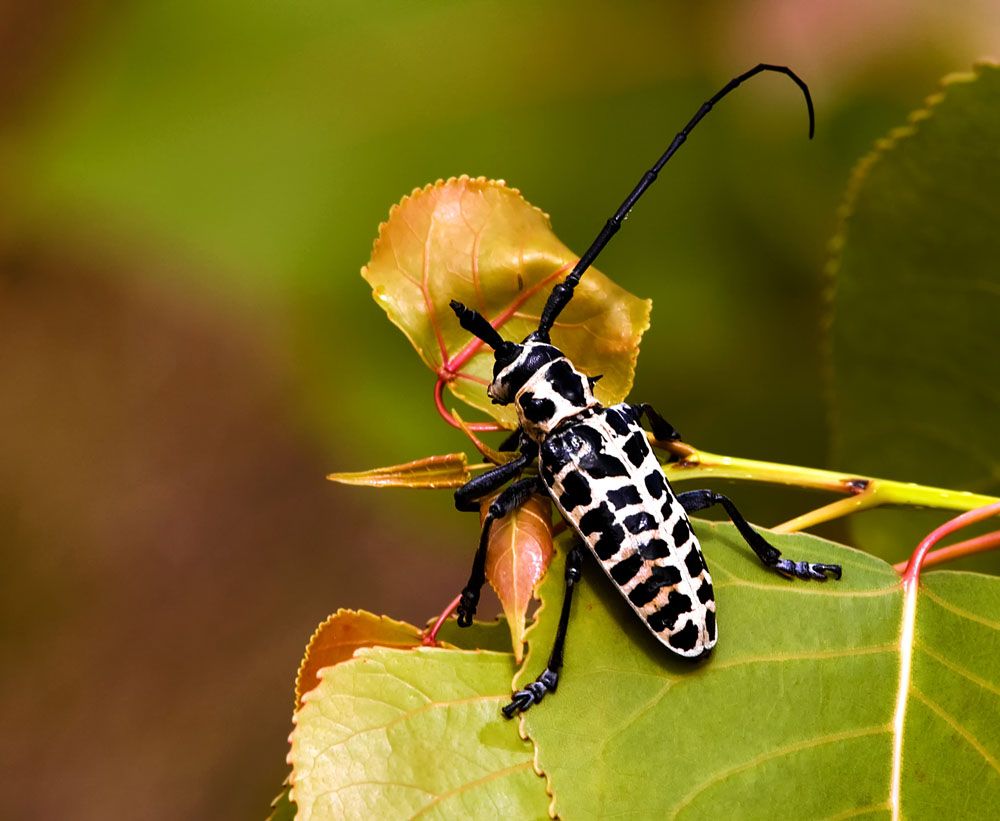
Cottonwood Borer – Plectodera scalator
Cottonwood Borer (Plectodera scalator)
Latin Name: Plectodera scalator
Common Name: Cottonwood Borer
Appearance:
- Cottonwood borers are huge, long-horned insects 1 to 1 1/4 inches in length. They’re black with white cross stripes caused by thick growths of white hairs. Their antennas, which are black and segmented, are nearly as long as their bodies.
- Adults emerge in late spring and early summer. They feed on new, sensitive tree shoots and lay eggs in apertures dug into the bark below the ground line at tree bases.
- The larvae dig into the base and roots of the trees, pushing off sawdust-like frass at the places of the entrance, and the eggs hatch in 10 to 14 days.
- The larvae are cream-colored and grow 1 1/4 to 1 1/2 inches long. The larvae are cream-colored and reach 1 1/4 to 1 1/2 inches in length.
